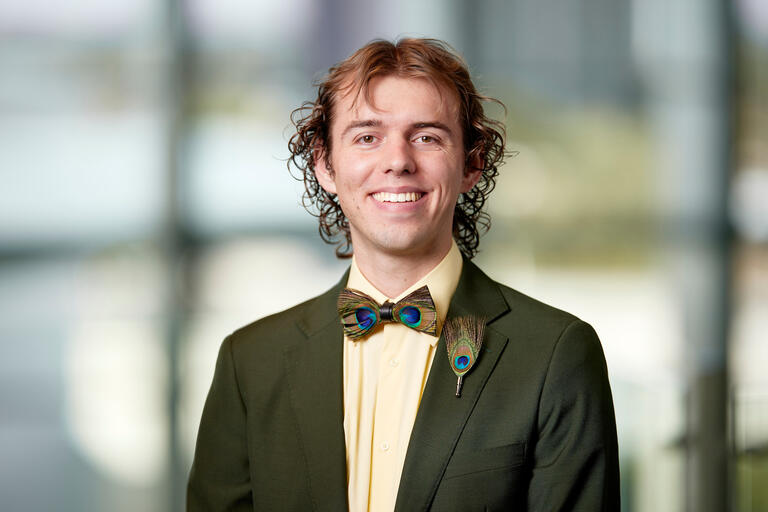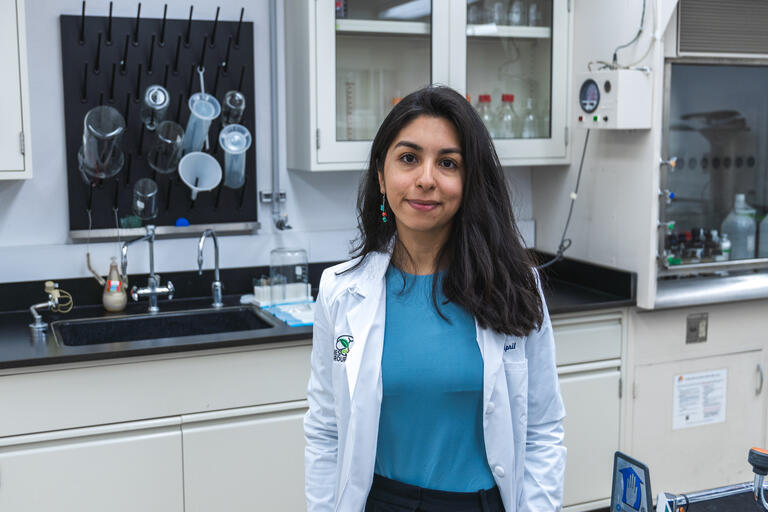How do you explain the innumerable intricacies of the science of superconductivity to those of us who wouldn’t know a superconductor from a choo-choo conductor?
Just follow the lead of chemist Keith Lawler: “I’ve had a lot of practice with my family.”
Lawler is a research professor and the associate director of the Nevada Extreme Conditions Laboratory led by UNLV physicist Ashkan Salamat.
As Lawler explains, the lab “uses high pressures and high temperature as our means of accessing different states that wouldn’t normally exist and different material that wouldn’t normally exist, and try to coax nature into giving us cool new materials.”
In 2020, the UNLV team, led by Salamat and working along with researchers at the University of Rochester in New York, made a truly sensational breakthrough: The discovery the first room-temperature superconducting material.
A super-simplification on this super breakthrough: Superconductivity is the ability of certain materials to conduct electric current with zero resistance. Zero resistance translates to significant savings. Consider that the U.S. energy grid, consisting of metallic cables, loses around $30 billion a year because so much current dissipates through copper cables.
But since superconductivity’s discovery in 1911, scientists have only been able to observe it at very low temperatures, making widespread applications impossible.
In the long-term, room-temperature superconductivity could pay huge dividends in scientific advances, economic prosperity, and global status for Southern Nevada. In the short term, it earned Lawler a 2022 Top Tier Award for his involvement in the project, as well as his work on several outreach initiatives to the community.
“This discovery has been recognized as an outstanding achievement,” said Kyle Kaalberg, executive director of Strategy and Strategic Initiatives at UNLV, in announcing the award. “(It) has helped shine an international spotlight on the significant and impactful research being performed at UNLV.”
An Energy Field of Dreams
The UNLV/Rochester team devised what scientists have called the potential “holy grail” of future energy efficiency by establishing room temperature superconductivity in the diamond anvil cell. This small, handheld research instrument allows for the compression of tiny materials under extreme pressures that would enable current to flow through a closed loop forever. That would solve the problem of lost energy, which has long hampered modern tech.
“When we transmit our power across the lines, on average we lose something like 5% of the electricity we generate just to the resistance. Our power plants are working so much harder than they need to,” says Lawler, who joined UNLV in 2012 as a post-doctoral researcher. Now on faculty, he runs quantum mechanics computer simulations in the Bigelow Physics Building and was a co-author of a number of high-profile research papers that were published about the discovery.
The discovery promises huge potential for how energy is stored and transmitted. “It’s a revolutionary game-changer,” Salamat said in a 2020 news release about the discovery. “The discovery is new and the technology is in its infancy and a vision of tomorrow, but the possibilities are endless. This could revolutionize the energy grid, and change every device that’s electronically driven.”
Possible future benefits: a solar farm in the American Southwest could transport energy to the East Coast with no loss; MRI machines, which now need liquid helium to operate, could be deployed to war zones; and it could completely remake our transportation system.
With this room-temp superconductivity revelation came the establishment of the Nevada Extreme Conditions Laboratory (NEXCL) at UNLV, with the aim of the university and Southern Nevada leading the way in the discovery of quantum materials that could powerfully impact societal and economic change.
Or in simpler terms: making us one of America’s prime energy hubs as the country confronts climate change. “By producing the highest-end work and the people trained to do this, we’re going to create jobs here,” Lawler says, noting that such a workforce will incentivize companies to locate their factories here.
In fact, hoping to prod that trend, Salamat and the paper’s collaborators are planning to design and manufacture the energy-saving devices here. “That’s the goal, to get that nucleus going,” Lawler says. “It’s like in Field of Dreams: If you build it, they will come.”
The Educational Pipeline for Tomorrow’s Energy Workforce
Among other reasons cited for Lawler’s award selection is that he represented the College of Sciences at a symposium hosted by Mission Support and Test Services at the Nevada National Security Site. That opens a doorway for future employment here in the valley.
“If we write grants with them and do projects with them, the students get exposure working in that kind of environment,” Lawler says. “They’ll be able to work in the national lab system or preferably at the test site itself.”
Also earning him Top Tier kudos is Lawler’s work building a K-12 outreach program through NEXCL, collaborating with education-focused faculty on campus to improve STEM education in our region.
“We want to get the students in the Clark County School District excited about science and math, and push them into considering higher education in science and math,” he says. “We can’t train a superconductor workforce if we don’t have people enrolling in science and engineering degrees. Step one is we have to get them excited.”
Excited? While the superconductivity breakthrough co-pioneered by Lawler and his colleagues will entail much more study and experimentation by the science community to implement in coming years, the vision it inspires – particularly for UNLV and Southern Nevada – is beyond exciting. “We’re still trying to understand the physics that are driving it because they’re reasonably complicated,” Lawler says.
“But if we can set up rigs where we can harvest all the great solar energy here and transmit it to the rest of the country via these superconducting wires we will one day have here, it’s this great source of clean energy – and Southern Nevada is right at the center of it, transmitting it all.”



